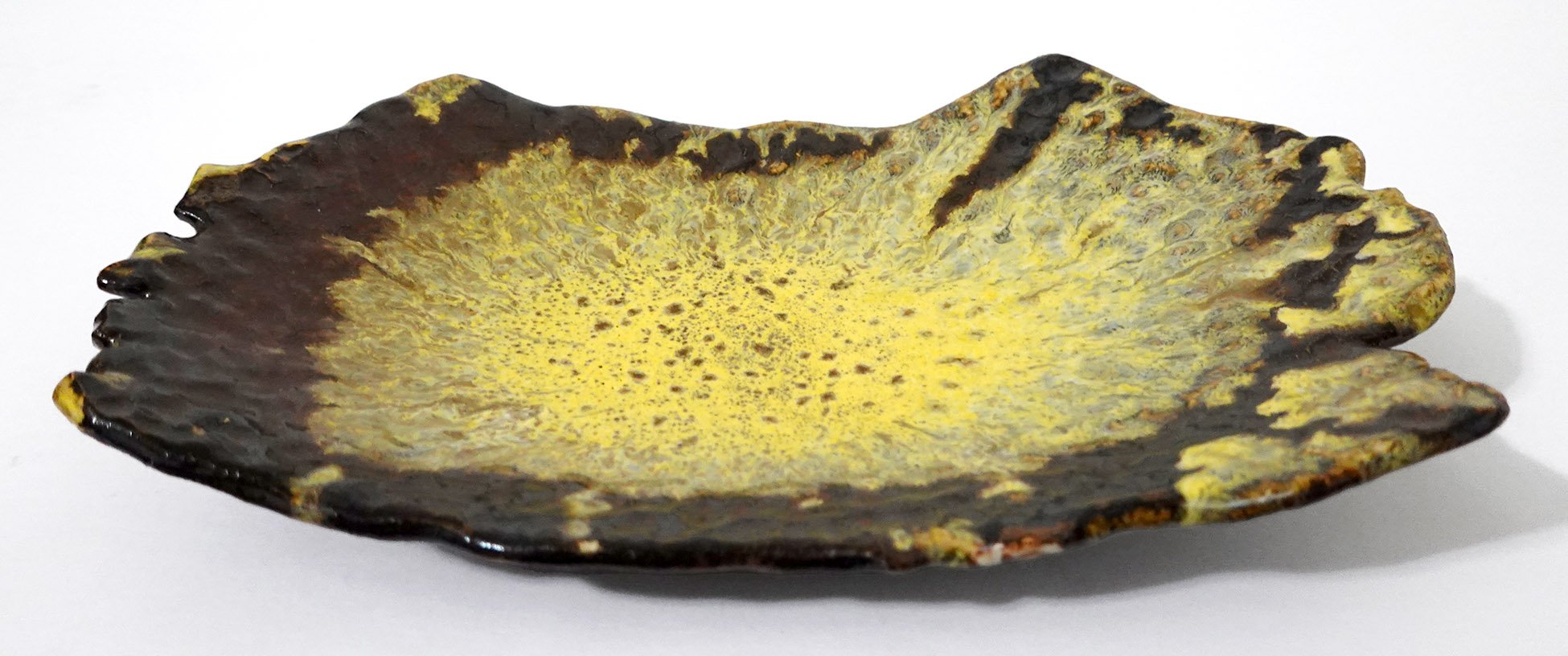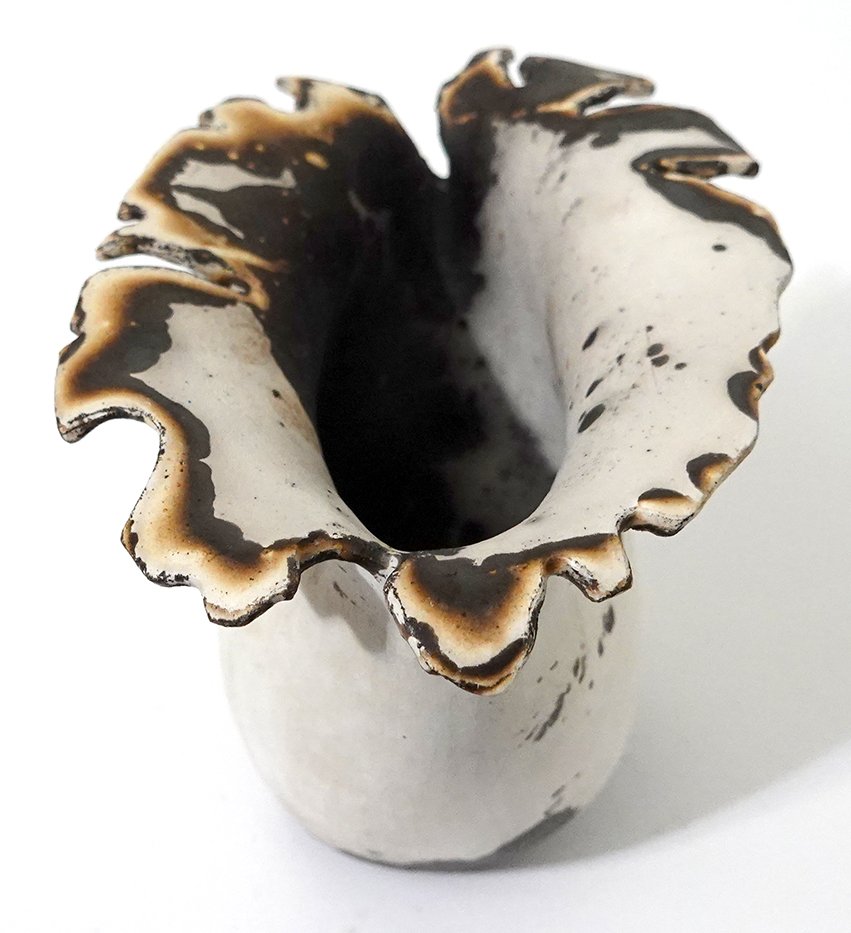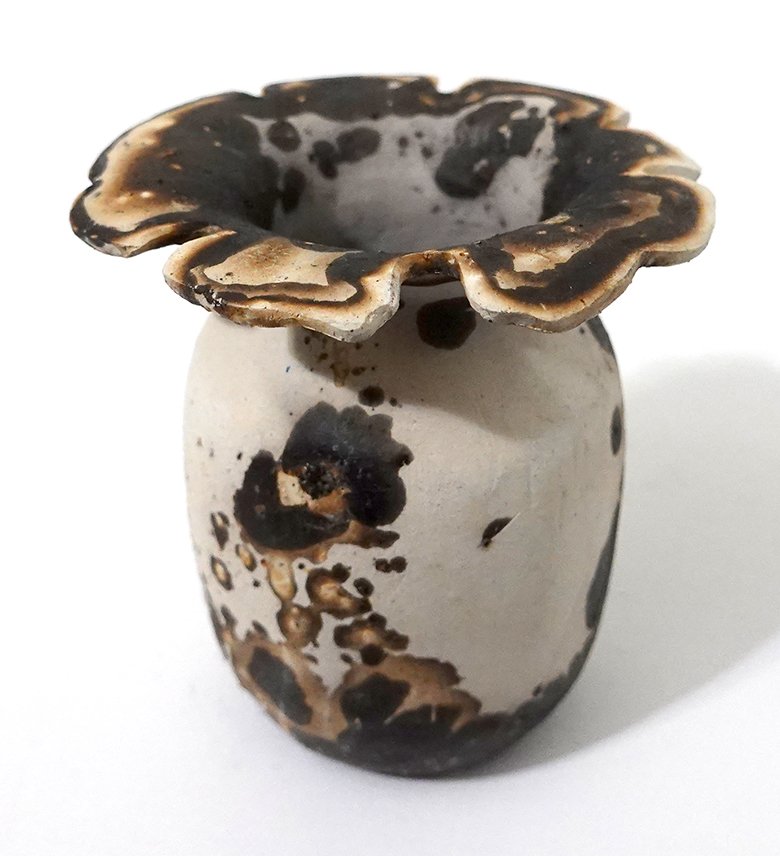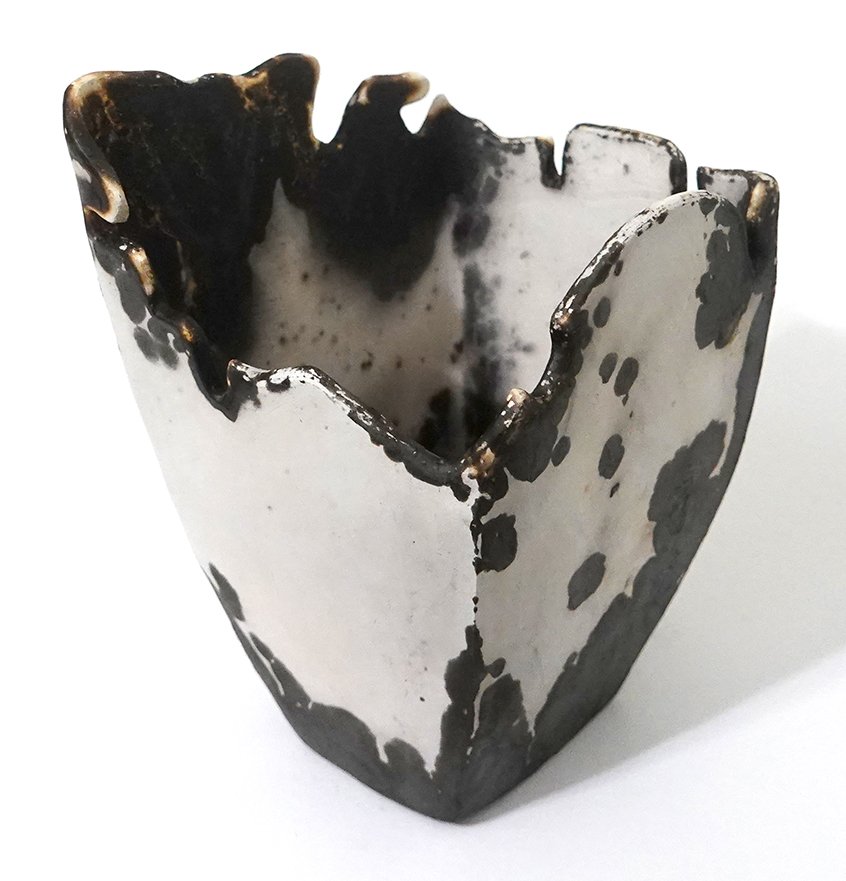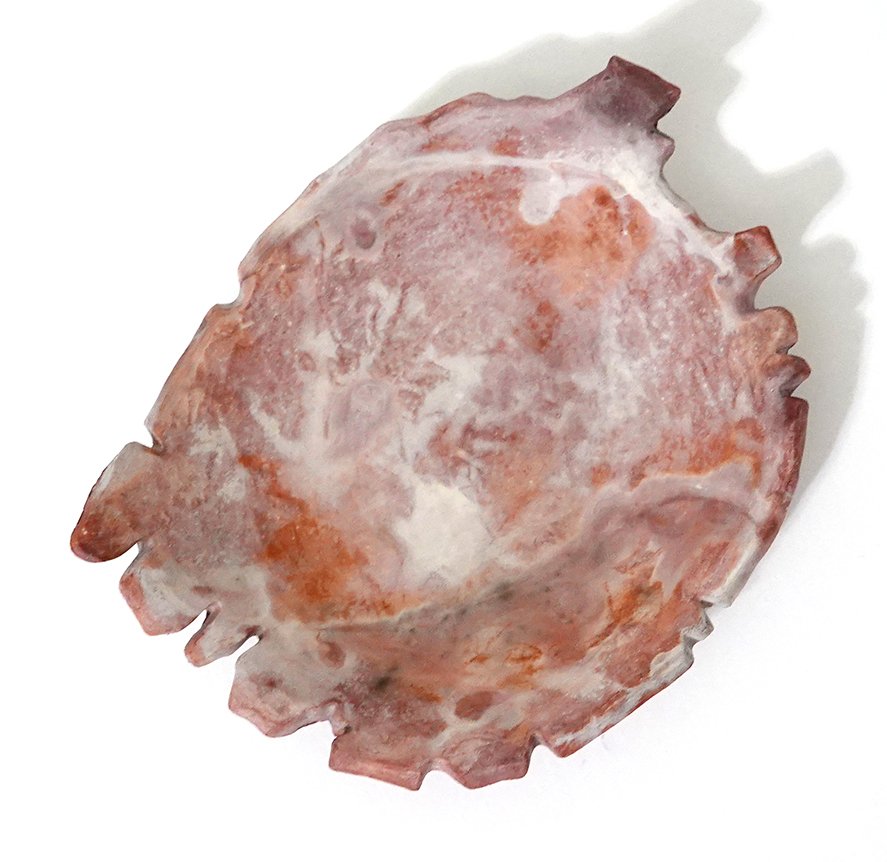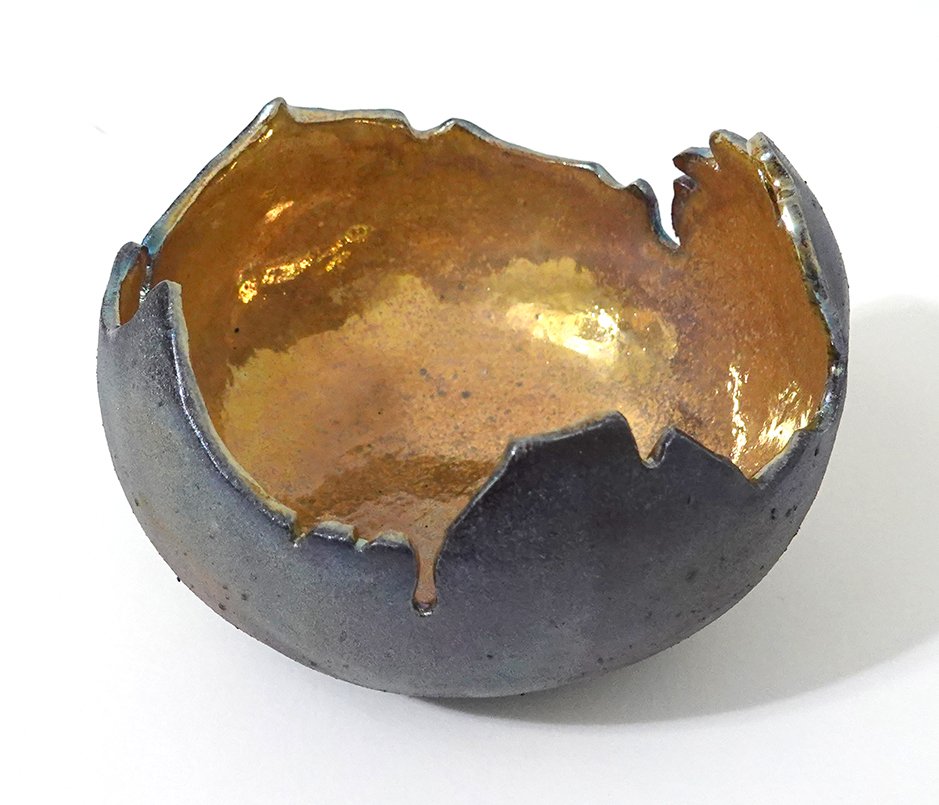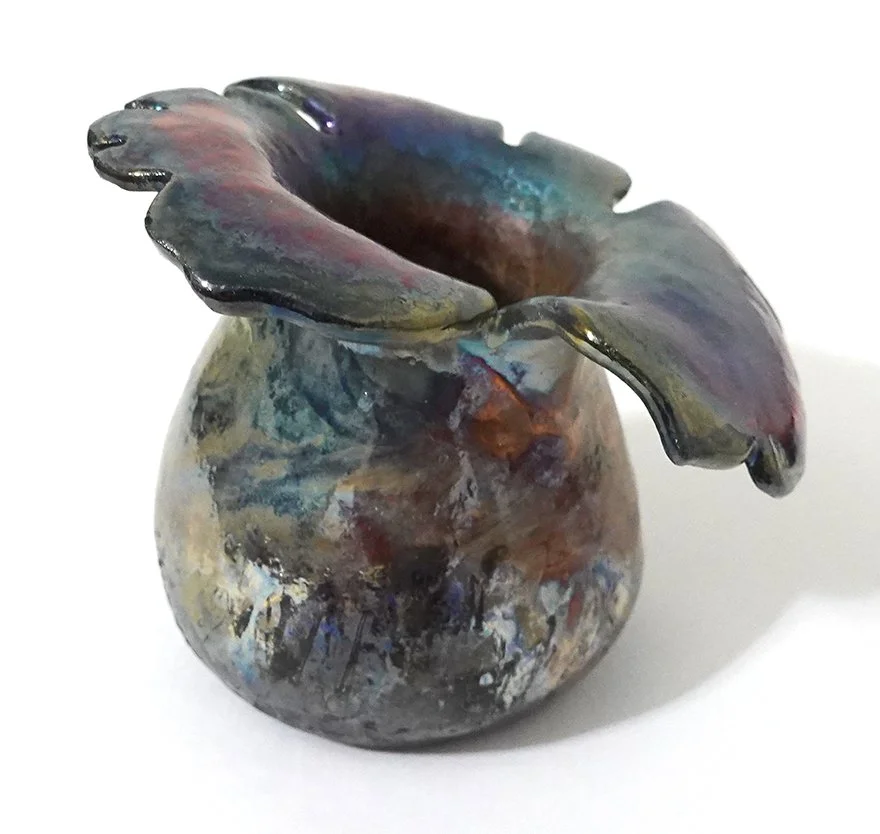I first tried honey raku in October 2023; I didn’t really like my own results at the time, but I learned two main takeaways in the process:
you very much want thin strands of honey rather than thick, so that it pulls into beads rather than leaving thick streaks
the honey works best on convex rather than concave forms, due to its propensity to run off vs. pool inside
With those in mind, I decided to give the honey raku finish another try atop two orbs, and I brought some honey drizzler sticks and a glass along for better stream control rather than using my earlier, clumsier technique of dispensing the honey via the squeeze bottle. Rotating these while they were insanely hot was asking a lot, so I really appreciated that Wanda was up for the challenge as she did that for me while I applied the honey.
Here’s the smaller sphere:
And the larger sphere:
The resulting pieces’ exteriors were smokier than the interiors since barely any honey made it inside, and the white shining out from the insides was distracting. I carefully stained the interior of the larger orb with India ink, and then watered it down a bit before staining the interior of the smaller orb as well. I love how they turned out; the bead trails of the honey almost look like planetary maps, comet/asteroid tracking paths, or constellations… a little bit like audio visualizations.
I also decided to experiment with a blue copper glaze in combination with the honey raku on a small bowl, even though the concave interior would be a challenge. What you can’t see in the below images is twofold: first, the blue lip is complemented by a blue base line, only visible when you lift the bowl up or get really down low. Second, this piece unfortunately lost the thermal shock lottery and has a number of minute cracks which make it less structurally sound. However, since it’s a decorative, low-fired piece anyway (as opposed to being food-safe or water-tight), the cracks are a permanent asterisk - but they won’t stop me from displaying or using it!






















